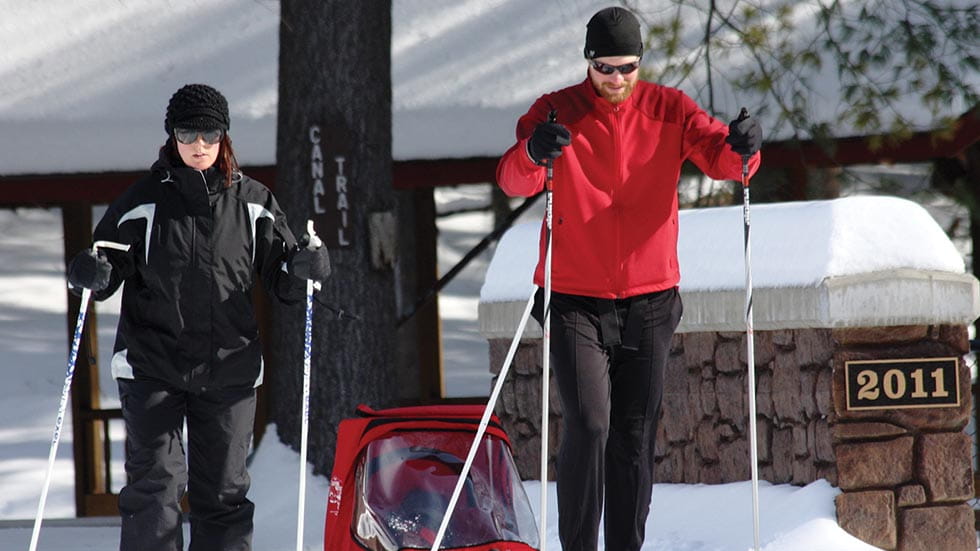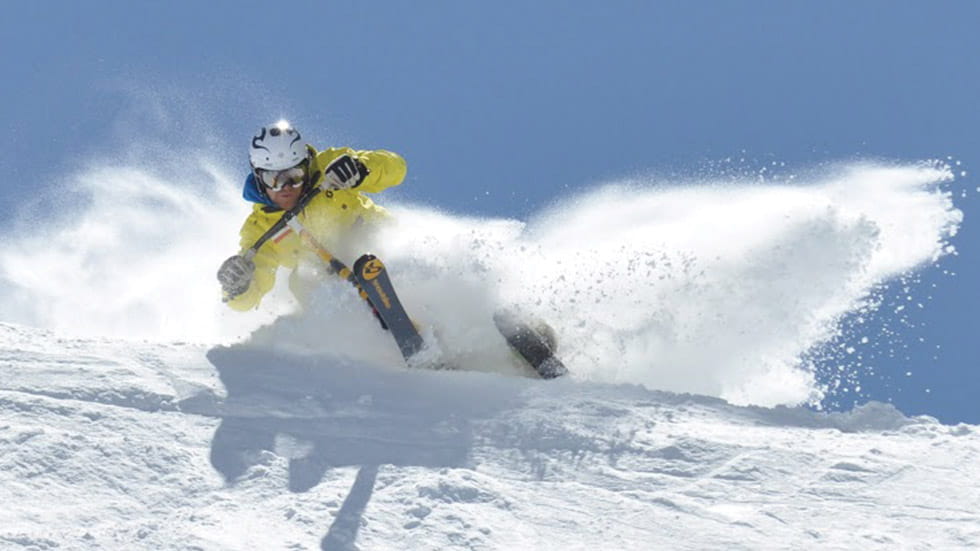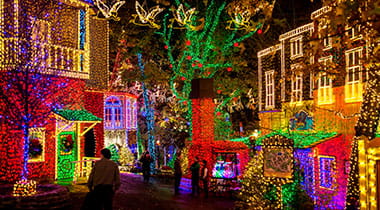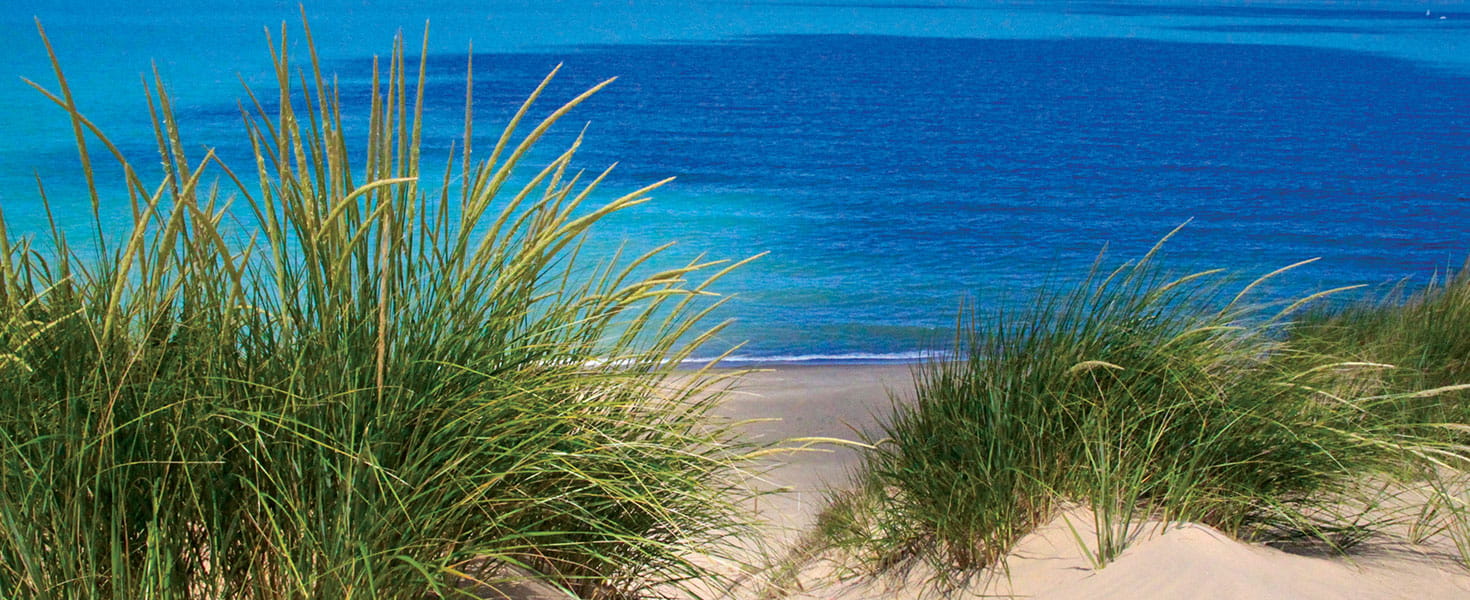When thinking of winter sports destinations in New England, Connecticut may not pop to mind, but the Nutmeg State abounds in winter fun. Not only can you enjoy mountains for skiing and snowboarding as well as trails for cross-country skiing and snowshoeing, but you can also partake in some unique winter activities. Seal watching, anyone?
ON THE SLOPES
At Connecticut’s four ski mountains, beginner skiers and snowboarders can get acclimated to trails or terrain parks while the more advanced can perfect their technique. Worried about a lack of snowfall this season? Don’t be. Each of the mountains has snowmaking ability. They all offer night skiing, too, in case you just can’t get away during the day or you simply prefer skiing under the stars.
Mohawk Mountain Ski Resort
Beginner skiers and snowboarders, including young families just getting started on the slopes, should head to Mohawk Mountain Ski Resort in Cornwall, which specializes in teaching newbies. The ski area is what’s known as a “feeder mountain,” in that its small size can accommodate budding skiers, says Jim Shockley, the resort’s branding and equipment manager. More experienced skiers can take advantage of 26 trails (which include one vertical drop of 650 feet) with 112 skiable acres set in 350 scenic acres of state forest. Snow tubing times are also offered regularly.
Ski Mount Southington in Plantsville features 14 trails and a terrain park across 51 skiable acres. In addition to more traditional skiing and snowboarding lessons, the resort offers lessons for children ages 6 to 16 in alpine ski racing as well as in freestyle skiing, which can incorporate tricks, jumps, flips and spins.
Ski Sundown in New Hartford has 70 skiable acres across 16 trails, including Gunbarrel and Satan’s Stairway, two of the region’s steepest slopes at 20 and 22 degrees, respectively. There are also two terrain parks: Tom’s Treat, with smaller and lower features for beginner and intermediate skiers and snowboarders, and the more advanced Stinger terrain park. Terrain park features—including a 32-foot down rail—rotate to keep returning visitors challenged.
In addition, Ski Sundown works with STRIDE Adaptive Sports to offer Connecticut’s largest and longest-running program of adaptive ski and snowboard lessons to individuals with disabilities.
Open year-round for a variety of adventure sports, 225-acre Powder Ridge Mountain Park & Resort in Middlefield gears up in winter for skiing and snowboarding on its 19 slopes and trails, including four terrain parks. There’s a snow tubing park, too.
ON THE TRAILS
As Connecticut’s only full-service cross-country ski center, Winding Trails Cross Country Ski Center has 380 acres of woodlands and waterways in Farmington. The 12.5 miles of trails are machine-groomed for diagonal-stride skiing and skate skiing, and they provide winter views of pine and hardwood forests and waterways.
Ski School instructors teach skiers not only technique but also about equipment, what to wear and trail etiquette. The center rents out cross-country skis, and within the park, there is a 20-acre section for snowshoeing along with a large, long hill for sledding and tubing. (Tubes can be rented, but bring your own sled.)
White Memorial Foundation has 40 miles of trails for cross-country skiers and snowshoers. Photo by Lukas Hyder
Cross-country skiers and snowshoers can venture along 40 miles of trails through predominantly forested habitats at the White Memorial Foundation, a 4,000-acre protected area that spans Litchfield and Morris in northwestern Connecticut. Access is free. Purchase a trail map from the on-site museum’s gift shop, or download one from the center’s website.
ON TWO WHEELS
Who knew you could ride an electric bike on the snow? You can try it out with Covered Bridge Electric Bike in West Cornwall. Also called an e-bike, an electric bike works like a regular bicycle, but it’s also equipped with a battery-powered pedal assist. The battery-powered assistance kicks in when—and to what degree—the rider wants, adding a boost for handling snow and other tricky terrains.
Owner Bob Ensign and his staff bring riders along an extensive trail system within the region where the shop is based. “We spend a fairly decent amount of time going over the workings of the bike,” says Ensign. “And then we send them on a test ride. If need be, one of us will go with them.”
Snowbiking at Powder Ridge Mountain Park & Resort
A different sort of winter biking is offered at Powder Ridge Mountain Park & Resort: snowbiking. The specialized bike has two small skis instead of wheels positioned in front and two skis on your feet, providing four points of contact with the snow. Newcomers must take an hour-long course on a Brenter Snowbike B6 Skibike, after which they receive a license for riding the bike at Powder Ridge and other rental facilities.
ON THE ICE
Yes, you can ice-skate at an indoor rink, but there’s something special about skating outside, whether it’s on a frozen lake in the country or a manmade rink in the city. Three years ago, Mill River Park in Stamford opened its Steven & Alexandra Cohen Skating Center, an outdoor rink said to be larger than The Rink at Rockefeller Center. Open daily, the downtown rink has more than 9,000 square feet of ice and can accommodate up to150 recreational skaters. Skate rentals and blade sharpening are available.
For fishing enthusiasts, every season can be fishing season in Connecticut thanks to ice-fishing courses offered through the state’s Department of Energy and Environmental Protection.
After graduating from the free Introduction to Ice Fishing course (to be held via Zoom this year), participants are invited to attend an ice-fishing field trip. Classes are usually offered in January and February.
“We do most of our ice fishing in the northern part of Connecticut,” says Thomas Bourret, an environmental-protection biologist with the state’s Fisheries Division. “The shoreline lakes don’t freeze up as well as inland lakes due to the influence of the warm waters and weather from Long Island Sound.”
IN THE WILD
During winter months, bald eagles from colder climes migrate south to certain parts of Connecticut in search of open water to fish in. There are two ways to view them respectfully.
Connecticut River Expeditions offers two-hour Eagle/Osprey Cruises from mid- to late March and into April along the lower part of the Connecticut River, with boats leaving from Haddam. Onboard naturalists share interesting facts about eagles, osprey and other wildlife that might be seen in the skies, on land or in the water, including a variety of birds as well as seals and deer.
In Southbury, bald eagles can be viewed from Shepaug Dam Eagle Observation Area, perched about 1,000 feet from the Shepaug Dam on the Housatonic River. (Access to the observation area is free, but reservations are required.)
“We have volunteers on-site to answer questions,” says Lucy Walker, the observation area’s site manager. “Most visitors come with their own binoculars or scopes, and we assist them in finding the eagles.”
In Groton, Project Oceanology, a nonprofit that provides hands-on marine science education, offers cruises to observe migrating harbor seals in Fishers Island Sound, two miles off Connecticut’s southeastern coast at the eastern end of Long Island Sound. The cruise, guided by marine science educators, takes place aboard Enviro-Lab Research Vessels that are equipped with railing deck space for optimal viewing (and heated cabins for when you get chilly).
“We give a brief presentation about the seals [and what passengers] are about to see and then walk out together to the vessel,” says Molly Jacobs, director of curriculum and instruction at Project Oceanology.
On board, passengers help collect data for monitoring seal populations to share with marine scientists and researchers.
So, with all these winter activities on offer, what are you waiting for? Get outside, and have some fun.




















